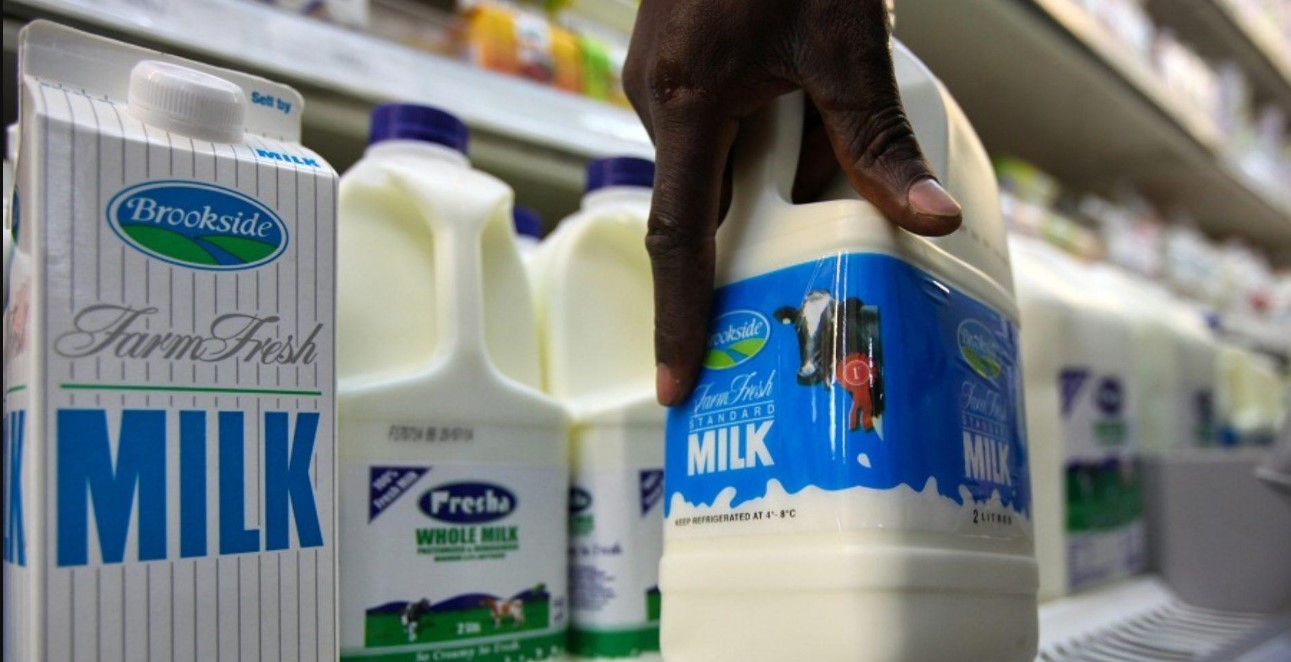Milk and maize top the list of Kenya's most consumed food in 2023

Counties such as Meru, Nakuru, Nyandarua, Murang’a, and Kiambu led in agricultural production due to their diverse crop outputs.
Milk was the most consumed food in Kenya in 2023, with every citizen drinking 86.1 litres on average during the year, according to data from the Kenya National Bureau of Statistics (KNBS).
It was followed by maize, a staple ingredient in ugali, with a per capita consumption of 63.3 kilogrammes.
More To Read
- Treasury CS Mbadi dismisses claims of new taxes on bread, milk, and unga in Finance Bill 2025
- World Bank urges 16 per cent VAT on meat, wheat flour, avocado, coffee to boost Kenya’s revenue
- Why long-life and flavoured milk may harm your toddler’s health
- Government assures Kenyans unga prices will remain stable amid supply concerns
- Millers increase unga prices as maize supply tightens
- Ghee vs butter: Which one is healthier for your kitchen and your heart?
Bananas ranked third, with Kenyans consuming 48 kilogrammes per person, followed by sugarcane (40.6 kilogrammes), wheat (39.3 kilogrammes), Irish potatoes (32.3 kilogrammes), cassava (21.2 kilogrammes), and rice (21.1 kilogrammes).
The KNBS report shows that the average Kenyan consumed 552.4 kilogrammes of food in 2023.
Counties such as Meru, Nakuru, Nyandarua, Murang’a, and Kiambu led in agricultural production due to their diverse crop outputs.
“These counties are high producers of tea, coffee, maize, vegetables, potatoes, and raw milk,” reads the report.
The report highlighted that most of the milk consumed came from five counties, with Kiambu leading, followed by Meru, Uasin Gishu, Nakuru, and Murang’a.
Uasin Gishu, Trans Nzoia, Bungoma, and Kakamega were also significant contributors, accounting for much of the wheat, Irish potatoes, beans, and sugarcane consumed across the country.
During the year, the report notes that each Kenyan consumed 15.1 kilogrammes of beans and 9.7 kilogrammes of meat on average.
Uasin Gishu emerged as the leading producer of maize, contributing 476,538 tonnes to the national supply, followed by Trans Nzoia with 448,011 tonnes. Other significant contributors included Narok (314,403 tonnes), Bungoma (222,912 tonnes), and Nakuru (215,412 tonnes).
Sugar, a key ingredient in tea, was highly consumed, with each Kenyan consuming 40.6 kilogrammes of sugarcane and sugar products in 2023. Bungoma led sugar production with 92,409 tonnes, followed by Kakamega, Kisumu, Busia, and Migori, collectively contributing 65 per cent of the country’s sugar output.
Wheat products, including bread, mandazi, and pastries, were also a staple, with a per capita consumption of 39.3 kilogrammes. While most wheat is imported from countries such as Russia and Ukraine, counties like Narok, Nakuru, Uasin Gishu, Meru, and Laikipia accounted for 94 per cent of local wheat production.
Irish potatoes, used in dishes such as irio, bhajia, and fries, had a consumption rate of 32.3 kilogrammes per person. Nakuru was the top producer, followed by Nyandarua, Elgeyo Marakwet, Meru, and Narok.
Rice, a popular choice for dishes like pilau, had an average consumption of 21.1 kilogrammes, with most of it imported from Pakistan. However, local production from counties like Kirinyaga (home to the Mwea Irrigation Scheme), Kisumu (Ahero), and Tana River (Bura Irrigation Scheme) contributed to the supply.
Meat consumption averaged 9.7 kilogrammes per person, with Turkana leading in beef production, followed by Narok, West Pokot, Siaya, and Kitui.
The report noted that leafy greens such as kale, spinach, cabbage, and tomatoes, alongside beans and avocados, also featured prominently in Kenyan diets.
Top Stories Today












































